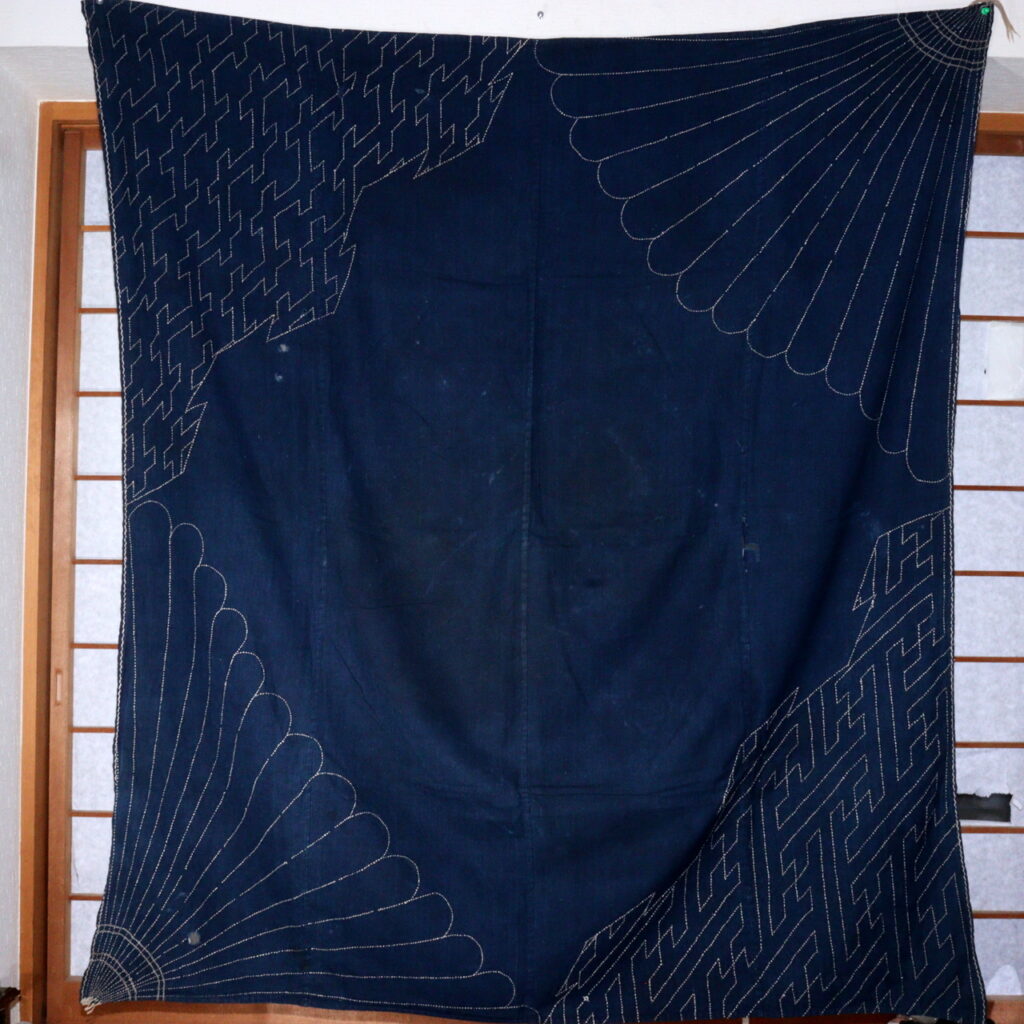
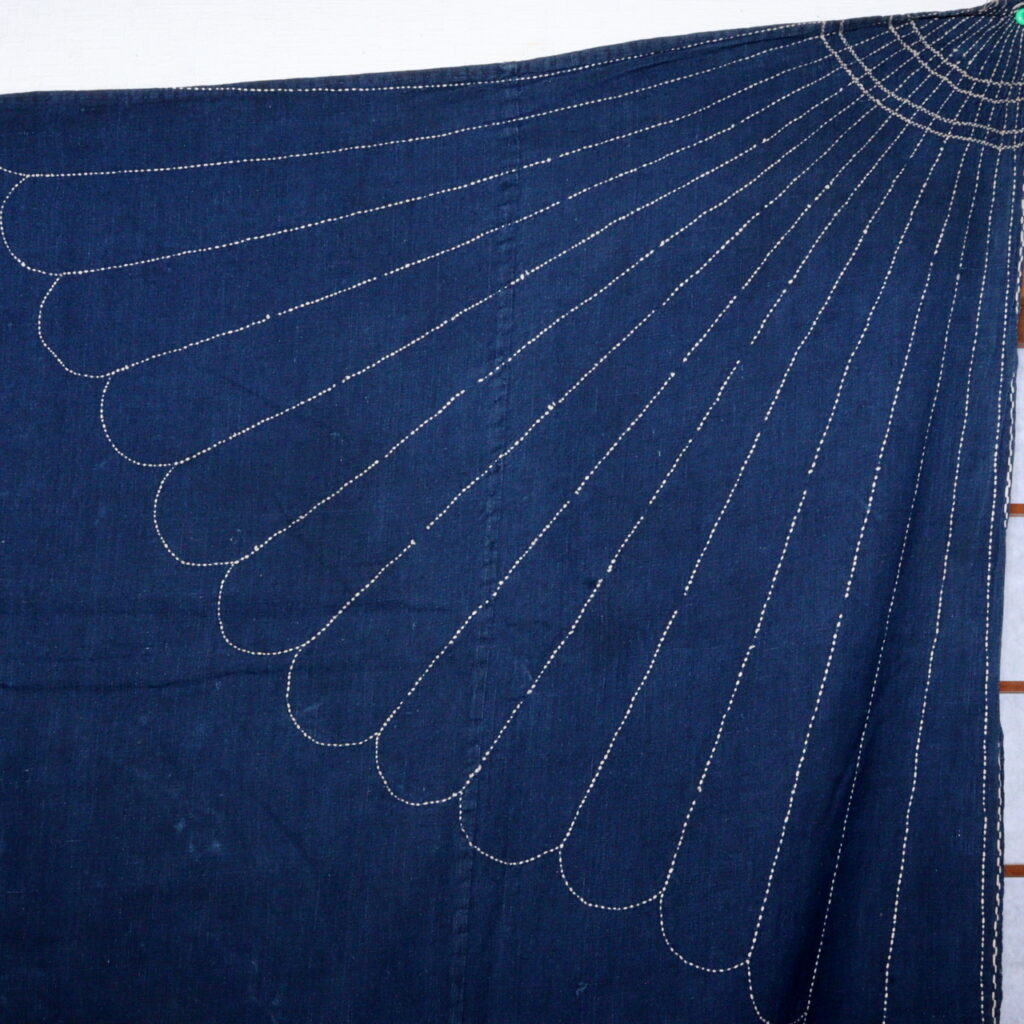
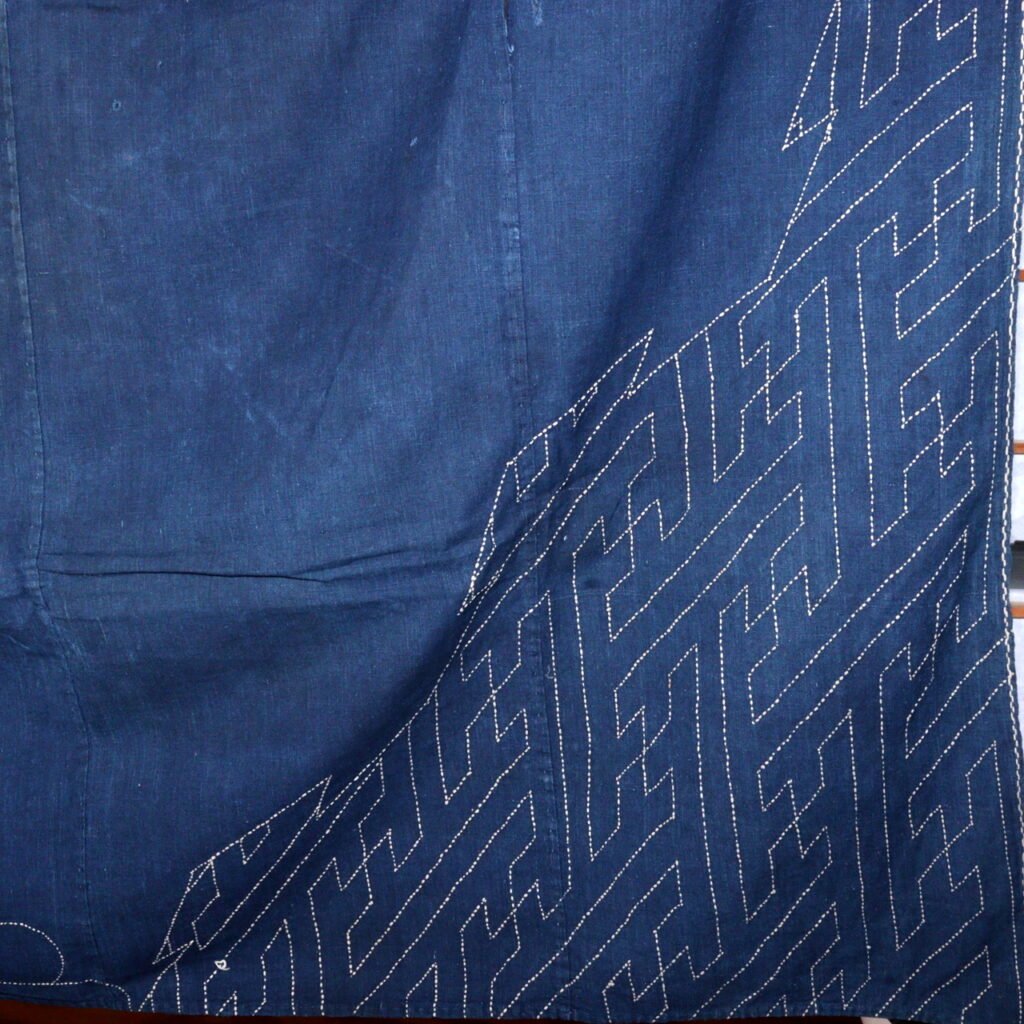
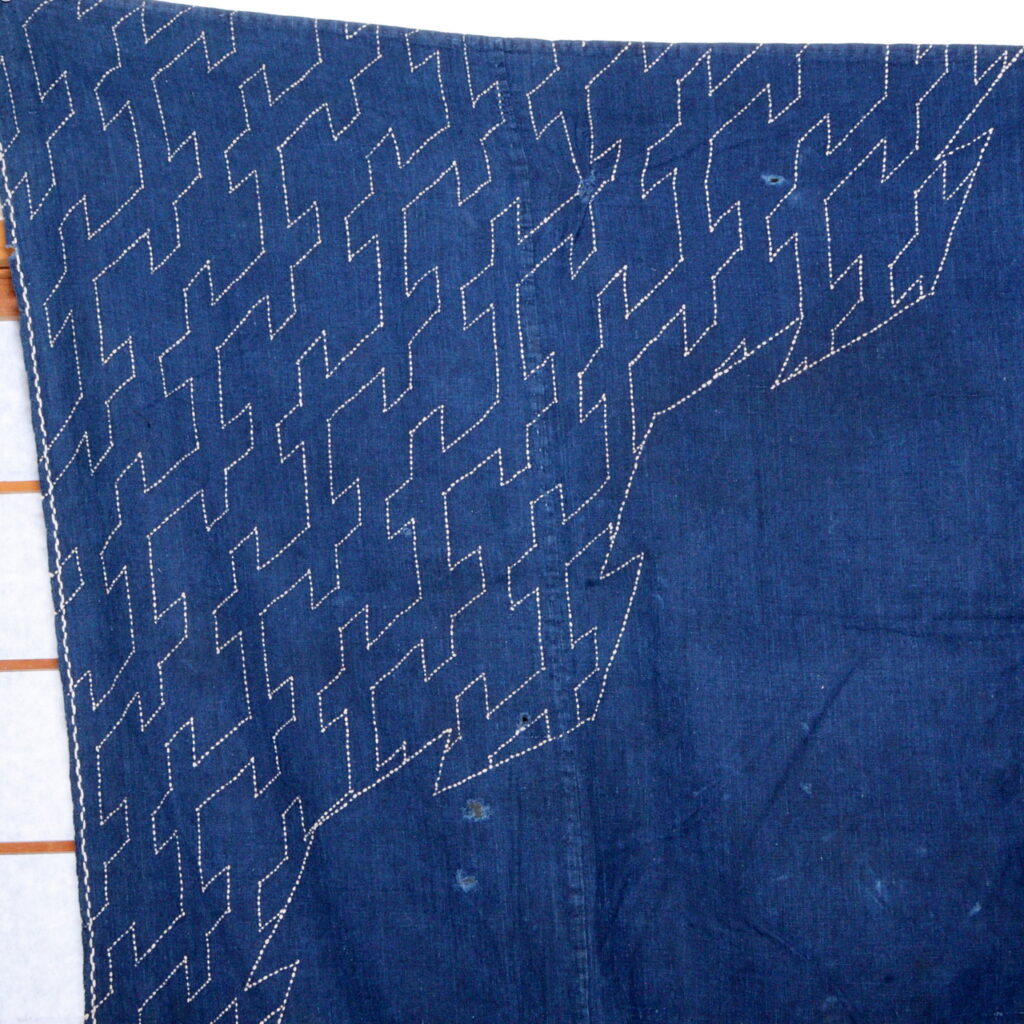
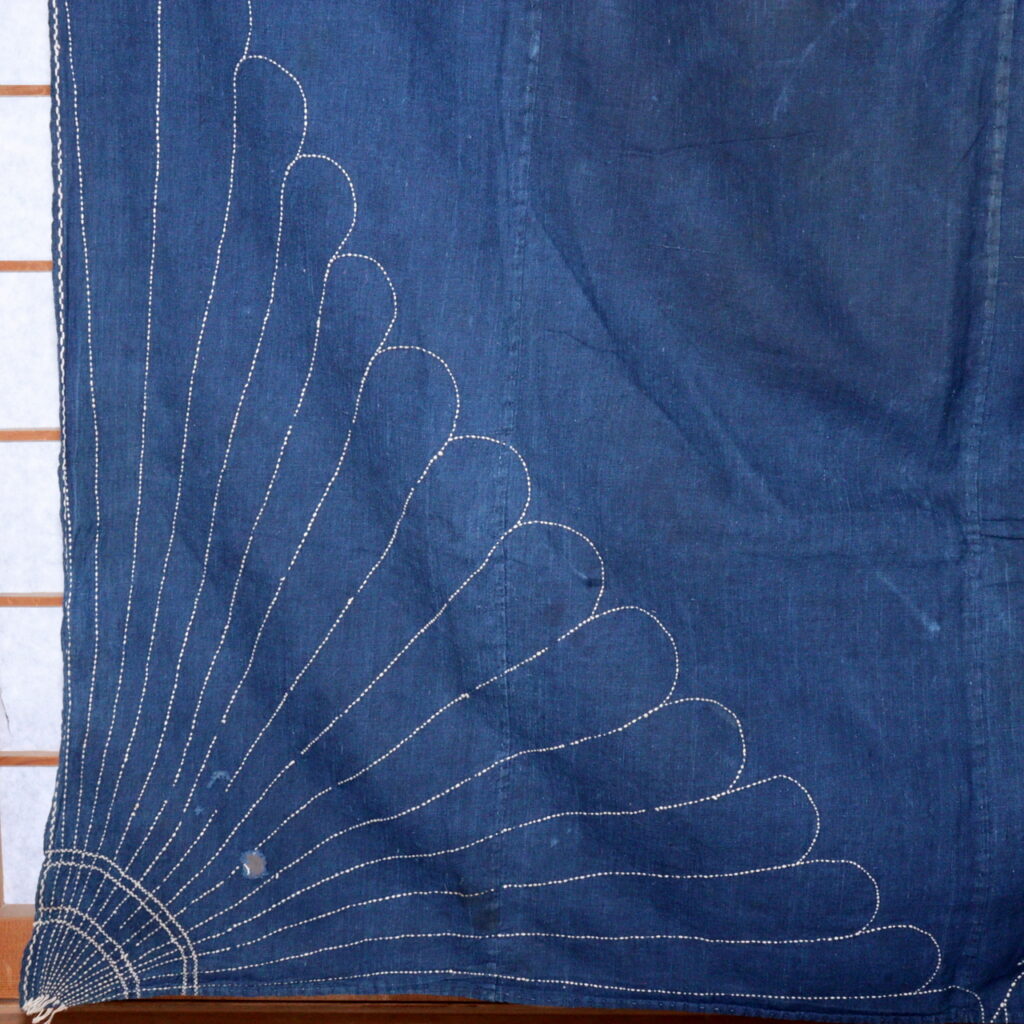
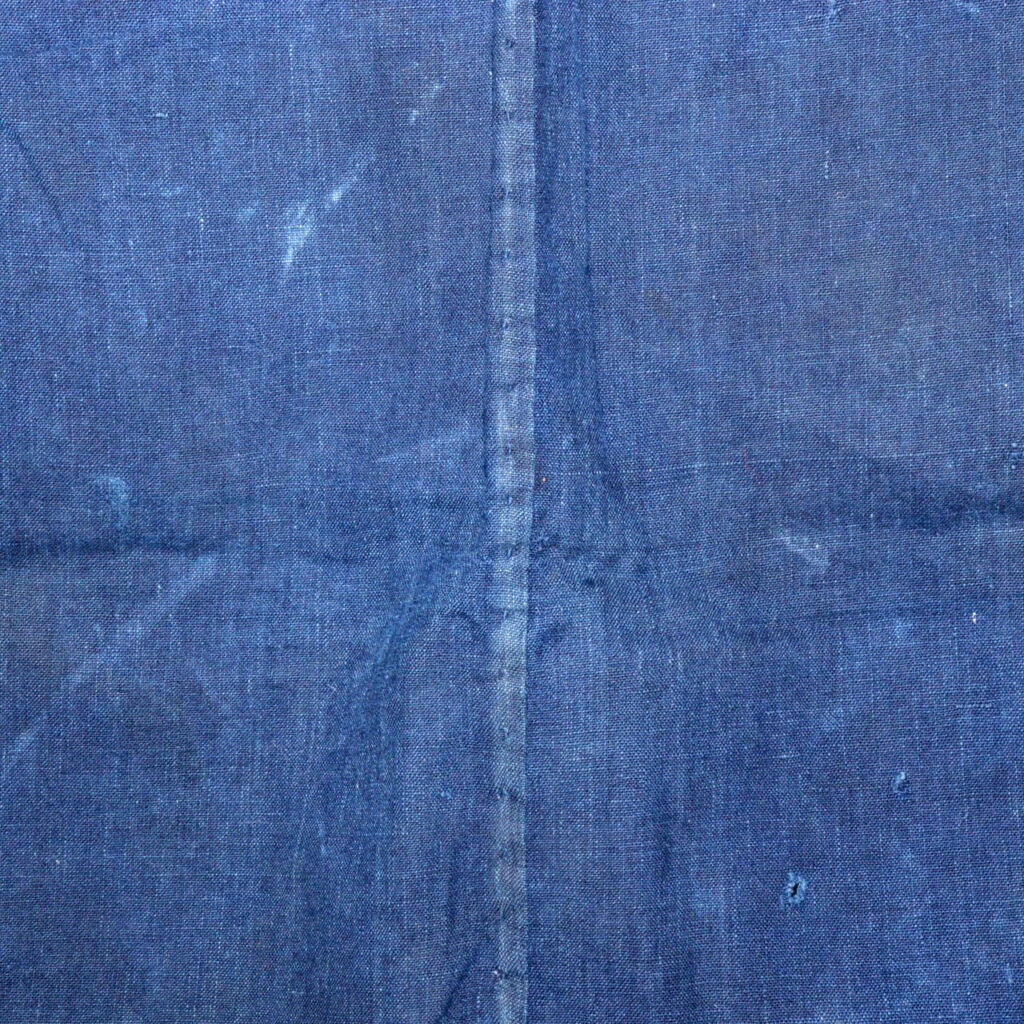
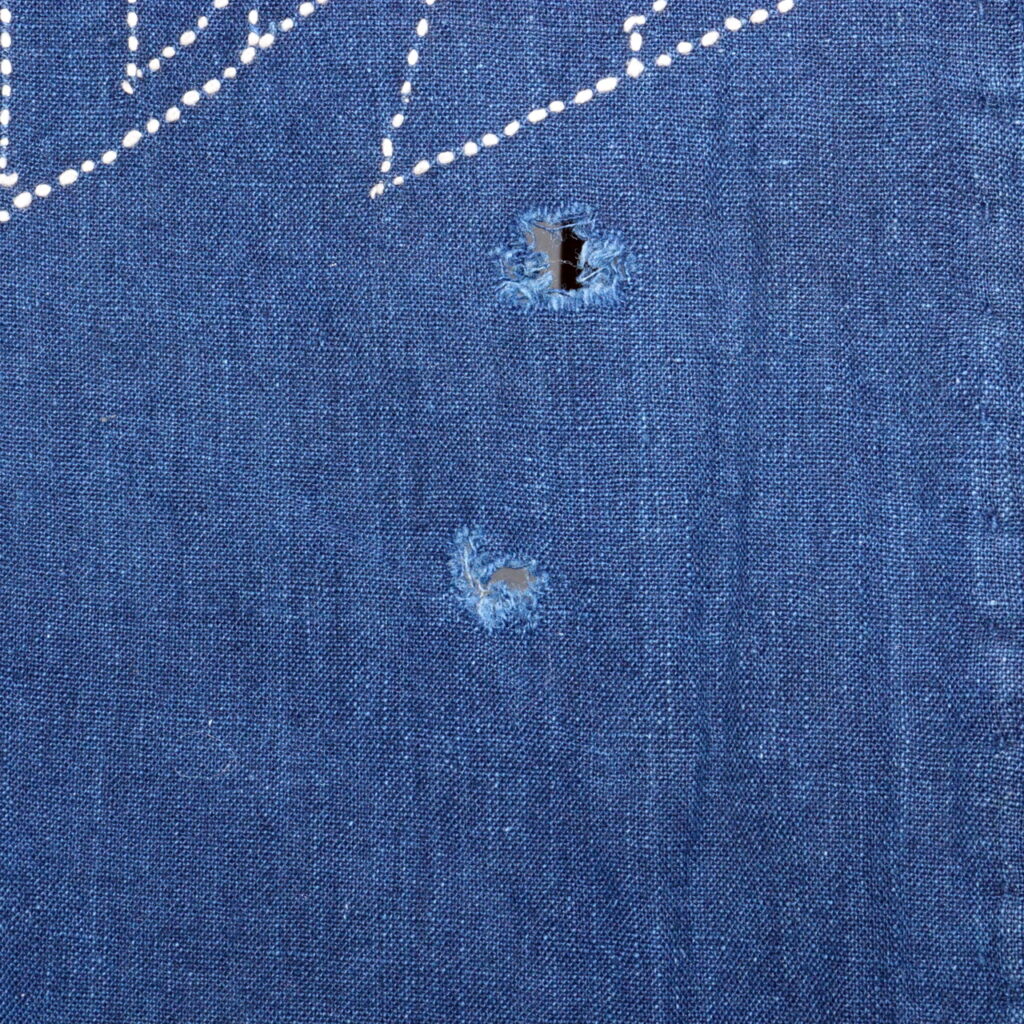
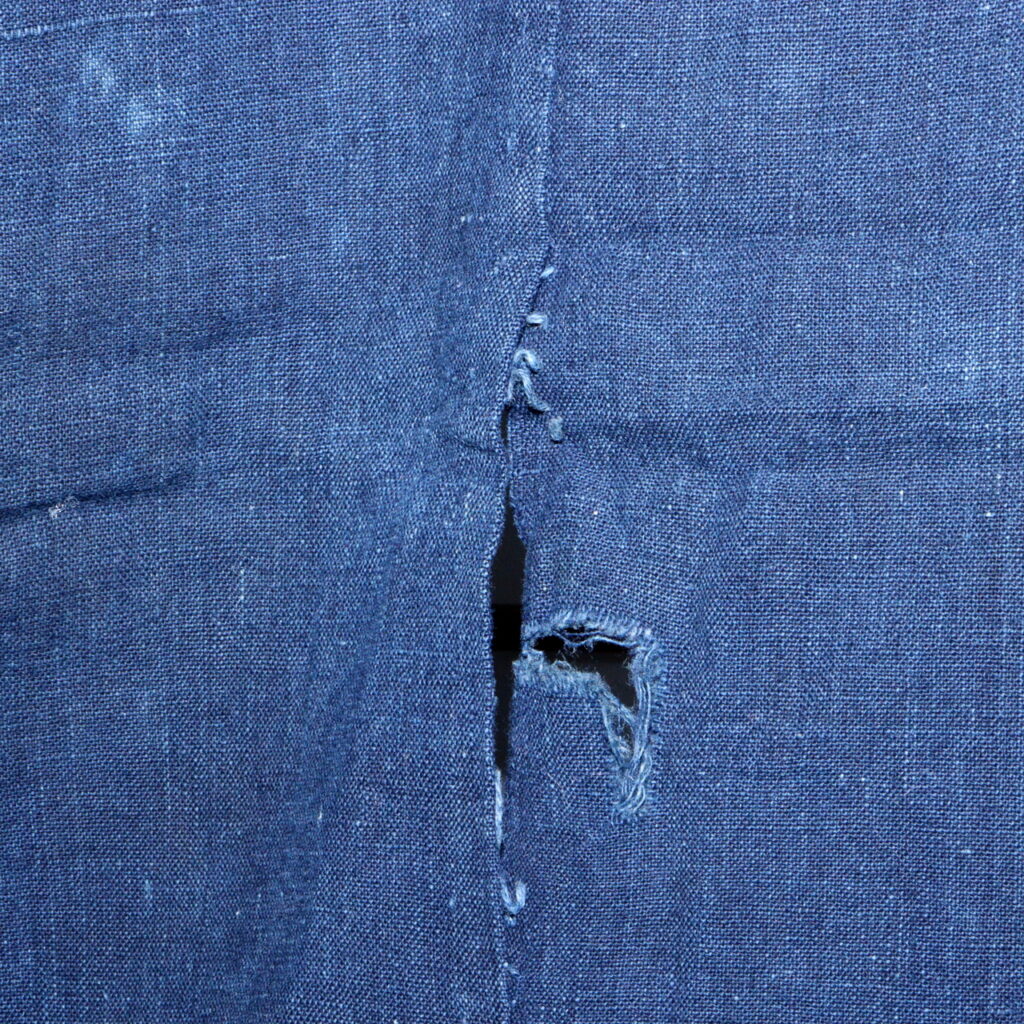
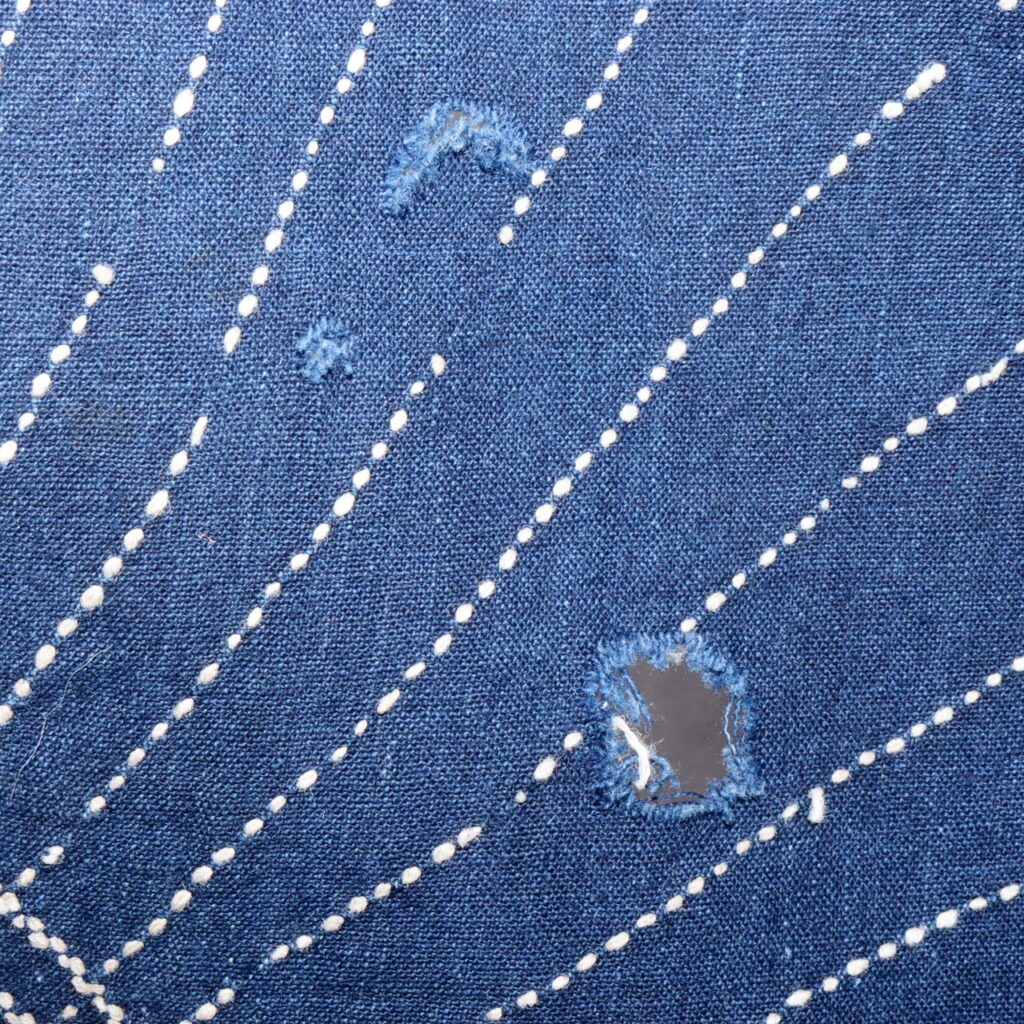
A Work of Quiet Elegance and Enduring Craftsmanship
Among Japanese antiques admired by collectors and textile enthusiasts worldwide, few capture the essence of Japanese craftsmanship like indigo-dyed sashiko cloth. This exquisite vintage furoshiki—a traditional wrapping cloth embroidered with intricate geometric and fan-like motifs—embodies centuries of aesthetic philosophy and regional textile artistry.
The Story Behind This Piece
This piece of Japanese indigo sashiko fabric represents a long lineage of rural artistry and domestic craftsmanship rooted in Japan’s Edo and Meiji periods. The term sashiko (刺し子) literally means “little stabs,” referring to the running stitch technique once used to reinforce, repair, or insulate garments. Over time, it evolved into a highly respected form of folk embroidery—functional yet profoundly beautiful.
The cloth is dyed in deep aizome (藍染), the traditional Japanese indigo dye derived from natural indigo leaves. Indigo was more than a color; it was believed to have protective and purifying qualities, symbolizing endurance and purity. In farming and fishing communities, indigo-dyed cotton became an emblem of everyday strength and humble dignity.
The symmetrical stitching patterns seen here—radiating sensu (folding fan) shapes and interlocking key-fret designs—are both decorative and symbolic. The fan motif suggests prosperity and openness, while the key-fret (sayagata) pattern evokes continuity and protection. Together, they transform this simple furoshiki into a cultural tapestry of meaning and memory.
The Beauty and Craftsmanship
Every stitch in this fabric was done by hand using cotton thread from its original era, preserving the tactile rhythm and warmth of the artisan’s touch. The embroidery forms precise yet fluid curves, showing the balance between discipline and intuition that defines traditional Japanese design.
The aizome dye lends the textile a depth of blue that changes with light—sometimes appearing near-black, sometimes glowing like twilight. This color variation, achieved through repeated dyeing and oxidation, exemplifies wabi-sabi, the Japanese appreciation for impermanence and subtle imperfection.
Unlike the symmetrical weaves of Chinese silks or the formal brocades of Western textiles, Japanese sashiko celebrates the hand’s imperfection as beauty. The artist’s breath, movement, and time are literally woven into the cloth, giving it an organic vitality.
Though originally practical—used for wrapping, carrying, or covering household items—this furoshiki now serves as an art object, equally suited to display in a modern interior or a traditional tearoom. Its interplay of indigo and ivory-white thread resonates with both minimalist aesthetics and the layered philosophy of Japanese folk art (mingei).
Its Value for Collectors Worldwide
For collectors, designers, and admirers of Japanese culture, this vintage sashiko textile holds enduring appeal:
- Cultural heritage: A living example of mingei craftsmanship and Edo-period textile traditions.
- Artisanal rarity: Hand-stitched with vintage threads, each piece is singular in rhythm and tone.
- Decorative versatility: Perfect as a wall hanging, table display, or interior accent reflecting Japanese minimalism.
- Symbolic artistry: The combination of indigo and geometric motifs embodies purity, continuity, and harmony—values central to Japan’s visual and spiritual culture.
- Investment in authenticity: As handmade sashiko becomes rarer in Japan, such works are increasingly sought after by museums and textile collectors worldwide.
Conclusion & Product Link
This Japanese indigo sashiko furoshiki speaks softly of hands that stitched for both necessity and beauty. Each thread reflects patience, precision, and a love of craft that transcends generations.
👉 View this item here:
https://koedo-sun-art.com/search?q=BRKW125&options%5Bprefix%5D=last
If this piece has already found its new home, please explore other Japanese antique textiles and folk art here:
🔗 https://koedo-sun-art.com